I am trying to follow Lin, Costello's explanation of the simplified BM algorithm for the binary case in page 210 of chapter 6 with no success on finding the error locator polynomial. I'm trying to implement it in MATLAB like this:
function [locator_polynom] = compute_error_locator(syndrome, t, m, field, alpha_powers)
%
% Initial conditions for the BM algorithm
polynom_length = 2*t;
syndrome = [syndrome; zeros(3, 1)];
% Delta matrix storing the powers of alpha in the corresponding place
delta_rho = uint32(zeros(polynom_length, 1)); delta_rho(1)=1;
delta_next = uint32(zeros(polynom_length, 1));
% Premilimnary values
n_max = uint32(2^m - 1);
% Initialize step mu = 1
delta_next(1) = 1; delta_next(2) = syndrome(1); % 1 + S1*X
% The discrepancy is stored in polynomial representation as uint32 numbers
value = gf_mul_elements(delta_next(2), syndrome(2), field, alpha_powers, n_max);
discrepancy_next = bitxor(syndrome(3), value);
% The degree of the locator polynomial
locator_degree_rho = 0;
locator_degree_next = 1;
% Update all values
locator_polynom = delta_next;
delta_current = delta_next;
discrepancy_rho = syndrome(1);
discrepancy_current = discrepancy_next;
locator_degree_current = locator_degree_next;
rho = 0; % The row with the maximum value of 2mu - l starts at 1
for i = 1:t % Only the even steps are needed (so make t out of 2*t)
if discrepancy_current ~= 0
% Compute the correction factor
correction_factor = uint32(zeros(polynom_length, 1));
x_exponent = 2*(i - rho);
if (discrepancy_current == 1 || discrepancy_rho == 1)
d_mu_times_rho = discrepancy_current * discrepancy_rho;
else
alpha_discrepancy_mu = alpha_powers(discrepancy_current);
alpha_discrepancy_rho = alpha_powers(discrepancy_rho);
alpha_inver_discrepancy_rho = n_max - alpha_discrepancy_rho;
% The alpha power for dmu * drho^-1 is
alpha_d_mu_times_rho = alpha_discrepancy_mu + alpha_inver_discrepancy_rho;
% Equivalent to aux mod(2^m - 1)
alpha_d_mu_times_rho = alpha_d_mu_times_rho - ...
n_max * uint32(alpha_d_mu_times_rho > n_max);
d_mu_times_rho = field(alpha_d_mu_times_rho);
end
correction_factor(x_exponent+1) = d_mu_times_rho;
correction_factor = gf_mul_polynoms(correction_factor,...
delta_rho,...
field, alpha_powers, n_max);
% Finally we add the correction factor to get the new delta
delta_next = bitxor(delta_current, correction_factor(1:polynom_length));
% Update used data
l = polynom_length;
while delta_next(l) == 0 && l>0
l = l - 1;
end
locator_degree_next = l-1;
% Update previous maximum if the degree is higher than recorded
if (2*i - locator_degree_current) > (2*rho - locator_degree_rho)
locator_degree_rho = locator_degree_current;
delta_rho = delta_current;
discrepancy_rho = discrepancy_current;
rho = i;
end
else
% If the discrepancy is 0, the locator polynomial for this step
% is passed to the next one. It satifies all newtons' equations
% until now.
delta_next = delta_current;
end
% Compute the discrepancy for the next step
syndrome_start_index = 2 * i + 3;
discrepancy_next = syndrome(syndrome_start_index); % First value
for k = 1:locator_degree_next
value = gf_mul_elements(delta_next(k + 1), ...
syndrome(syndrome_start_index - k), ...
field, alpha_powers, n_max);
discrepancy_next = bitxor(discrepancy_next, value);
end
% Update all values
locator_polynom = delta_next;
delta_current = delta_next;
discrepancy_current = discrepancy_next;
locator_degree_current = locator_degree_next;
end
end
I'm trying to see what's wrong but I can't. It works for the examples in the book, but not always. As an aside, to compute the discrepancy S_2mu+3 is needed, but when I have only 24 syndrome coefficients how is it computed on step 11 where 2*11 + 3 is 25? Thanks in advance!
